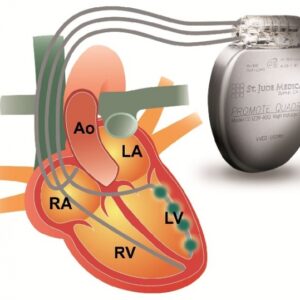Description
Familiarity with treatment
Thigh lift with liposuction is a surgical procedure aimed at reshaping the thighs by reducing excess skin and fat, resulting in smoother skin and improved contours. While the specific details of the procedure may vary depending on the patient’s needs and the surgeon’s technique, here is a general explanation based on the information from the search results:
Patient Evaluation: Before undergoing a thigh lift with liposuction, patients undergo a thorough evaluation by a plastic surgeon. This evaluation includes assessing the patient’s overall health, discussing their goals and expectations, and determining their suitability for the procedure.
Anesthesia: The procedure is typically performed under general anesthesia, meaning the patient is asleep and pain-free during the surgery. The specific type and amount of anesthesia used may vary depending on the patient’s needs and the surgeon’s preference.
Incision Placement: The surgeon makes incisions in strategic locations based on the type of thigh lift chosen and the patient’s specific anatomy. Incision patterns can vary, but common locations include the groin area, extending downward and wrapping around the back of the thigh, or along the inseam from the groin down to the knee.
Liposuction: In addition to removing excess skin, liposuction is often performed during a thigh lift to remove excess fat cells and improve overall contour. Liposuction involves the use of a thin tube called a cannula, which is inserted through the incisions to suction out unwanted fat deposits.
Skin and Fat Removal: After liposuction, the surgeon removes excess skin and fat from the thighs. The amount of tissue removed depends on the patient’s individual needs and desired outcome. The remaining skin is then repositioned and tightened to create a smoother and more toned appearance.
Closure and Recovery: Once the desired reshaping and contouring are achieved, the surgeon closes the incisions with sutures. The incisions are typically closed in layers to minimize scarring. The patient is then monitored in a recovery area before being discharged with specific postoperative instructions.
Who is it suitable for?
Thigh lift with liposuction may be suitable for individuals who have specific concerns regarding the appearance of their thighs. Here are some factors that may indicate suitability for the procedure, as mentioned in the search results:
Excess Skin: Thigh lift with liposuction is often recommended for individuals with loose or sagging skin on their thighs. This can be a result of factors such as weight loss, aging, or genetics. The procedure helps remove excess skin and improve the overall contour and tightness of the thighs.
Excess Fat: Liposuction is commonly combined with thigh lift surgery to remove excess fat deposits in the thigh area. Individuals who have unwanted pockets of fat in the inner or outer thighs may benefit from this combination procedure.
Desire for Improved Contour: Thigh lift with liposuction is suitable for individuals who desire improved thigh contours and a more sculpted appearance. The procedure can address issues such as saddlebags, bulges, or uneven contours in the thigh area.
Good Overall Health: Candidates for thigh lift with liposuction should be in good overall health to ensure a safe surgical procedure and optimal recovery. It is important to undergo a thorough evaluation by a plastic surgeon to determine if you are a suitable candidate for the procedure.
Realistic Expectations: It is important for individuals considering thigh lift with liposuction to have realistic expectations about the outcomes of the procedure. Consulting with a qualified plastic surgeon can help set appropriate expectations and determine if the procedure aligns with your goals.
Who is it not suitable for?
Thigh lift with liposuction may not be suitable for everyone. Here are some factors that may indicate that the procedure is not suitable for an individual, as mentioned in the search results:
Poor Overall Health: Individuals with underlying medical conditions that may increase the risks associated with surgery, such as uncontrolled diabetes, heart disease, or certain autoimmune disorders, may not be suitable candidates for thigh lift with liposuction. A thorough medical evaluation is necessary to determine if the procedure is safe for you.
Unrealistic Expectations: It is important for individuals to have realistic expectations about the outcomes of the procedure. If your expectations are not in line with what can be achieved through thigh lift with liposuction, the procedure may not be suitable for you.
Obesity: Thigh lift with liposuction is not intended as a weight loss procedure. It is generally more appropriate for individuals who are close to their ideal body weight or have localized fat deposits and excess skin on their thighs. Individuals who are significantly overweight or obese may be advised to pursue weight loss through diet and exercise before considering body contouring procedures.
Smoking: Smoking can interfere with the healing process and increase the risks of complications during and after surgery. Most surgeons recommend quitting smoking well in advance of the procedure. If you are a smoker, your surgeon may advise against thigh lift with liposuction until you have successfully quit smoking.
Pregnancy or Plans for Future Pregnancy: It is generally recommended to postpone thigh lift with liposuction if you are currently pregnant or planning to become pregnant in the near future. Pregnancy can significantly alter the results of the procedure, and it is advisable to wait until you have completed your family before considering the surgery.
Insufficient Skin Elasticity: Thigh lift with liposuction requires a certain degree of skin elasticity to achieve optimal results. If your skin lacks elasticity, it may not be able to conform to the new contours after the procedure. In such cases, alternative treatments or procedures may be more suitable.
Advantages
Thigh lift with liposuction offers several advantages for individuals seeking to improve the appearance of their thighs. Here are some advantages mentioned in the search results:
Addressing Excess Skin: Thigh lift surgery targets loose, sagging skin that has stretched due to factors such as weight loss, aging, or genetics. One of the primary advantages of a thigh lift is that it removes excess skin, resulting in smoother and tighter thighs 1.
Contouring and Smoothing: Thigh lift with liposuction can help contour the thighs and improve their overall appearance. Liposuction removes excess fat deposits, while the thigh lift removes excess skin, resulting in improved contours and a more sculpted look 2.
Improved Thigh Proportions: Thigh lift with liposuction can help create more balanced and proportionate thighs. It can address issues such as saddlebags, bulges, or uneven contours, providing a more aesthetically pleasing appearance.
Customized Approach: The procedure can be tailored to each individual’s specific needs. The surgeon can determine the most appropriate incision pattern, amount of skin and fat removal, and liposuction technique based on the patient’s unique anatomy and desired outcome.
Combined Benefits: Thigh lift with liposuction combines the benefits of both procedures. Liposuction helps remove excess fat, while the thigh lift addresses loose skin. The combination can result in comprehensive improvements to the overall appearance of the thighs 3.
Enhanced Self-Confidence: For individuals who are self-conscious about the appearance of their thighs, thigh lift with liposuction can provide a boost in self-confidence and body image. It can allow individuals to feel more comfortable and confident in clothing and various activities.
Complications
Thigh lift with liposuction, like any surgical procedure, carries potential risks and complications. Here are some complications that may be associated with the procedure, as mentioned in the search results:
Bleeding: Bleeding can occur during or after the surgery. Surgeons take precautions to minimize bleeding during the procedure, but in some cases, additional measures may be necessary to control bleeding.
Scarring: Thigh lift with liposuction involves incisions, which can result in scarring. The extent and visibility of scarring can vary depending on factors such as the individual’s healing process, the surgical technique used, and the location and length of the incisions.
Infections: Infections can occur after surgery. Surgeons take precautions to minimize the risk of infection, such as administering antibiotics and maintaining sterile conditions during the procedure. However, infections can still occur and may require additional treatment.
Skin Discoloration: Some individuals may experience temporary or permanent skin discoloration in the treated area. This can manifest as hyperpigmentation (darkening of the skin) or hypopigmentation (lightening of the skin).
Seroma: Seroma refers to the accumulation of fluid under the skin at the surgical site. It can lead to swelling, discomfort, and delayed wound healing. Drainage or additional procedures may be necessary to address seroma.
Poor Wound Healing: In some cases, wound healing may be delayed or compromised. Factors such as poor blood circulation, infection, or underlying medical conditions can contribute to poor wound healing.
Skin Irregularities: Thigh lift with liposuction aims to improve the contour of the thighs. However, there is a possibility of developing skin irregularities, such as unevenness or dimpling, in the treated area.
preoperative care
Preoperative care is an essential part of the surgical process, aimed at ensuring the safety and well-being of patients before undergoing surgery. While the specific protocols may vary depending on the surgical procedure and healthcare facility, here are some aspects of preoperative care mentioned in the search results:
Medical Evaluation: Patients undergo a comprehensive medical evaluation to assess their overall health and identify any pre-existing medical conditions that may affect the surgical outcome. This evaluation includes a review of medical history, physical examination, and possibly additional tests or consultations with specialists.
Patient Education: Preoperative care involves providing patients with information about the surgical procedure, expected outcomes, potential risks and complications, and postoperative care instructions. This education helps patients understand what to expect and prepares them mentally and emotionally for the surgery.
Preoperative Testing: Depending on the type of surgery and the patient’s medical condition, various preoperative tests may be conducted. These tests can include blood work, imaging studies, electrocardiogram (ECG), and other diagnostic assessments to ensure the patient is in optimal condition for surgery.
Medication Management: Preoperative care involves reviewing the patient’s current medications and making any necessary adjustments. This may include discontinuing certain medications that can interfere with the surgery or adjusting the dosage of medications that need to be continued.
Preparation for Anesthesia: If the surgery requires anesthesia, preoperative care includes assessing the patient’s suitability for anesthesia and preparing them for the anesthesia process. This may involve fasting instructions, medication adjustments, and discussions with the anesthesiologist.
Consent and Documentation: Preoperative care involves obtaining informed consent from the patient or their legal guardian. This process ensures that the patient understands the risks, benefits, and alternatives of the surgery and provides their voluntary agreement to proceed. Documentation of the consent and other relevant information is an important part of preoperative care.
Emotional Support: Preoperative care includes addressing the patient’s anxiety and providing emotional support. Healthcare providers aim to create a supportive environment, answer any questions or concerns, and provide reassurance to help alleviate anxiety.
Postoperative care
Postoperative care refers to the care and support provided to patients after they have undergone surgery. The main goals of postoperative care are to promote healing, prevent complications, manage pain, and support the patient’s recovery. While the specific postoperative care protocols may vary depending on the type of surgery and individual patient needs, here are some general aspects of postoperative care mentioned in the search results:
Monitoring Vital Signs: After surgery, patients are closely monitored for changes in vital signs such as heart rate, blood pressure, respiratory rate, and temperature. This helps detect any signs of complications or adverse reactions to anesthesia.
Pain Management: Effective pain management is crucial for patient comfort and recovery. Depending on the type and extent of the surgery, pain medications may be prescribed to help manage postoperative pain. Other pain management techniques, such as ice packs or heat therapy, may also be used.
Wound Care: Proper wound care is essential to prevent infection and promote healing. This may involve cleaning and dressing the wound, as well as following specific instructions provided by the healthcare team. Patients are often taught how to care for their wounds at home and to monitor for signs of infection, such as increased redness, swelling, or drainage.
Mobility and Activity: Early mobilization and gentle activity are encouraged to prevent complications such as blood clots and promote circulation. Depending on the surgery, patients may be given specific instructions regarding movement restrictions, physical therapy exercises, or assistive devices to aid in mobility.
Diet and Nutrition: Adequate nutrition is important for healing and recovery. Depending on the surgery and individual needs, patients may receive specific dietary instructions, such as restrictions on certain foods or recommendations for a balanced diet. In some cases, nutritional supplements may be prescribed.
Medication Management: Patients may be prescribed medications to manage pain, prevent infection, or support healing. It is important to follow the medication schedule and instructions provided by the healthcare team, including any potential side effects or interactions.
Follow-up Appointments: Postoperative care often involves scheduled follow-up appointments with the surgical team. These appointments allow the healthcare providers to monitor the progress of healing, address any concerns or complications, and provide further guidance for the recovery process.








Reviews
There are no reviews yet.